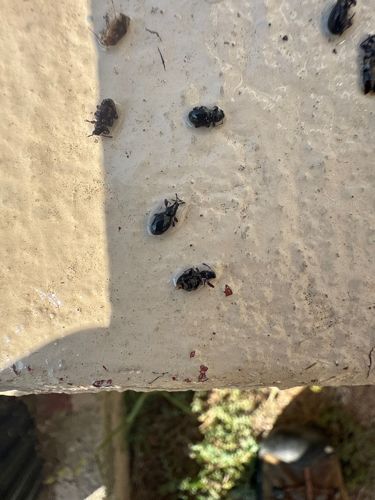Broad-nosed Weevil (likely species from Otiorhynchus or a related genus)
Scientific Name: Otiorhynchus spp. (or similar genus in Curculionidae)
Order & Family: Order: Coleoptera, Family: Curculionidae
Size: Typically 6 to 15 mm (0.24 to 0.59 inches) in length.

Natural Habitat
Gardens, nurseries, agricultural fields, woodlands. Adults are often nocturnal and found on foliage, while larvae live in soil and feed on roots.
Diet & Feeding
Adults feed on plant leaves, stems, and buds, often creating characteristic 'notches' on leaf edges. Larvae feed on plant roots, tubers, and rhizomes.
Behavior Patterns
Adult weevils are largely nocturnal, hiding during the day in leaf litter or under objects. Many species within this group are flightless. Females lay eggs in the soil near host plants. Larvae are C-shaped, legless grubs that develop underground. Some species are parthenogenetic (reproduce without males).
Risks & Benefits
Potential risks include significant damage to a wide range of cultivated plants, including ornamental plants, fruits (e.g., strawberries, raspberries), and vegetables, due to both adult and larval feeding. They are considered agricultural and horticultural pests. Benefits are negligible from a human perspective, though they are part of the broader insect biodiversity and food web.
Identified on: 9/17/2025